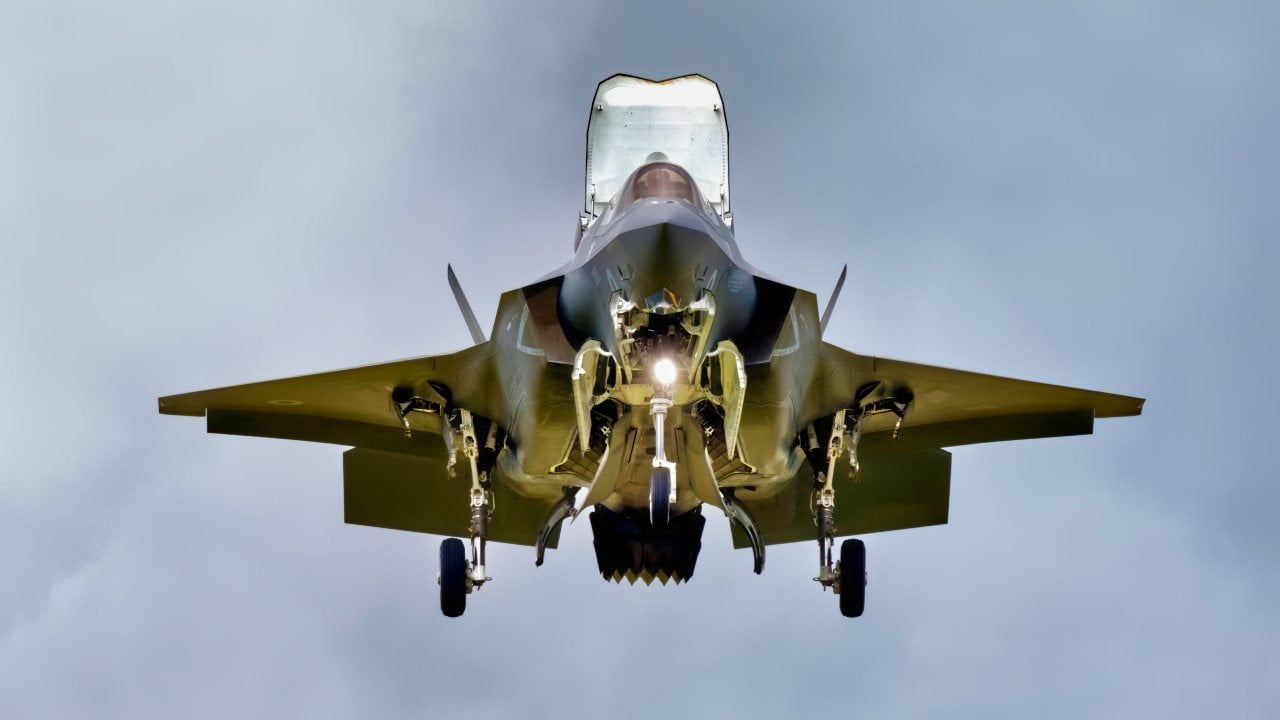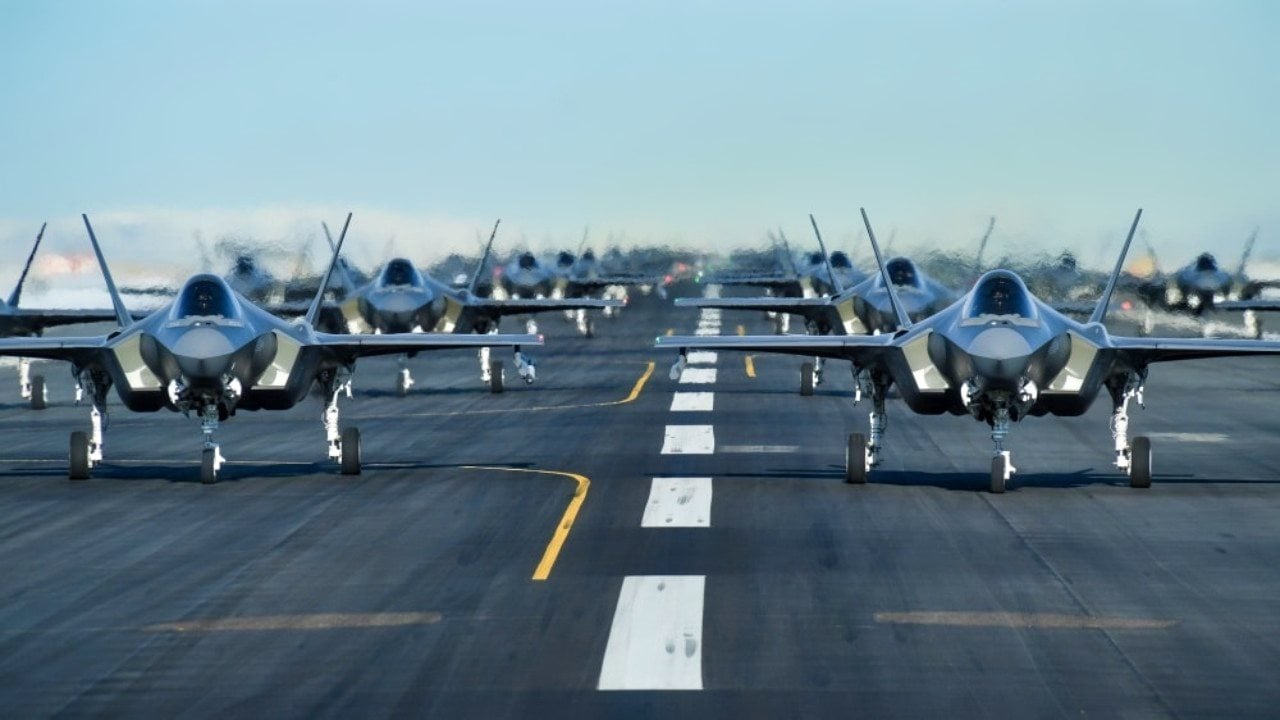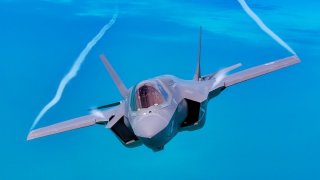The UK Wants the F-35 Fighter To Be Its 'Superpower' But Math Makes That Impossible
The UK is expected to receive 74 F-35s by 2033. The British military is also developing the Tempest, a sixth-generation fighter expected to enter service in the mid-2030s.
Summary: The Lockheed Martin F-35B Lightning II entered service with the UK's Royal Air Force's 617 Squadron "Dambusters" in 2018 and the 809 Naval Air Squadron "The Immortals" in 2023. Despite these additions, concerns remain that the UK may not have enough F-35s to meet its defense needs, especially with the reduction of its planned acquisition from 150 to 138 aircraft.

-The UK is expected to receive 74 F-35s by 2033. The British military is also developing the Tempest, a sixth-generation fighter expected to enter service in the mid-2030s.
-Until then, the F-35B remains crucial for UK defense, particularly in NATO operations.
The UK Has an F-35 Problem It Can't Easily Solve
The first Lockheed Martin F-35B Lightning II arrived in the UK in June 2018, and the short/vertical takeoff and landing (S/VTOL) variant subsequently entered service with the Royal Air Force's (RAF's) near infamous 617 Squadron "Dambusters," while last December, the 809 Naval Air Squadron "The Immortals" was also reestablished to operate the fifth-generation stealth fighter.
As previously reported, 809 Naval Air Squadron – which was initially raised during the Second World War – was selected by the First Sea Lord, Admiral Sir George Zambellas, to receive the Lightning II because of its illustrious history as a strike and attack squadron.
The F-35B has been seen as providing greater versatility for the British military as the S/VTOL multirole fighter can operate from the Royal Navy's Queen Elizabeth -class aircraft carriers, as well as vessels of allied nations, but can also be deployed from airfields with short airstrips.
Does the UK Have Enough F-35s?
Despite a second front-line squadron now employing the F-35, there have still been concerns within the British government that the RAF and Royal Navy, which jointly operate the Lightning II, may not have enough combat aircraft in service.

The UK had previously scaled back the acquisition of the F-35B from 150 aircraft down to 138 – in part to fund other projects, notably the Global Air Combat Programme (GACP) to develop a sixth-generation fighter and supporting systems. That sixth-generation fighter aircraft – previously dubbed the Tempest – is expected to enter service in the mid-2030s and could be "optionally manned" while supported by a swarm of unmanned drones.
However, supporters of the F-35 have argued that the Royal Air Force and Royal Navy will need a fighter like the Lightning II in service long before the Tempest and its loyal wingmen drones will take to the skies.
More Coming – But Will It Be Enough?
The British military is still on track to receive 74 F-35s by 2033, while it has received 33 to date.
"The Lightning force continues to provide a key component of the UK contribution to NATO in response to Russia's continued illegal war and occupation of Ukraine," Defence Procurement Minister James Cartlidge said in a letter to Jeremy Quin, the chair of the Commons Defence Committee, according to a new report from Forces.net.
"In 2023 UK F-35Bs have undertaken long-range missions from RAF Marham, supported by Voyager tankers, seamlessly integrating with our own fourth-generation Typhoons and fighters from other partner nations, to form a potent force mix," Cartlidge added.

The procurement minister is far from alone in warning that the RAF/Royal Navy may need additional F-35s.
"Funding for a second tranche of F-35 Lightning has been delegated to Air Command as part of our recent annual budget cycle," Jeremy Quin, then minister of state at the Ministry of Defense told UK Defence Journal last year. "As you know, we are going to acquire 48. We have made it absolutely clear that we will be acquiring more."
The good news for the UK is that it isn't alone in adopting the F-35 – and multiple NATO members are already on track to receive the stealth fighter in the coming decade. Perhaps the UK is in the best position to hedge its bets. It can see if the GACP moves forward at a Tempest's pace and is able to enter service on schedule – because at this point, even if London suddenly were to decide to order more F-35s, the backlog is substantial and any additional aircraft wouldn't be coming any earlier than 2033.

For now, the UK can continue to receive the F-35 and hit the magic 74 in the next decade and by then it will know how far along the Tempest might be. And given how some programs have faced continued delays, it is likely the RAF will be taking another look at the F-35 as that program matures.
Author Experience and Expertise: Peter Suciu
Peter Suciu is a Michigan-based writer. He has contributed to more than four dozen magazines, newspapers, and websites with over 3,200 published pieces over a twenty-year career in journalism. He regularly writes about military hardware, firearms history, cybersecurity, politics, and international affairs. Peter is also a Contributing Writer for Forbes and Clearance Jobs. You can follow him on Twitter: @PeterSuciu. You can email the author: [email protected].


